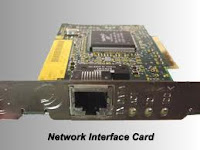Flash Memory
Flash memory also known as flash RAM. It is a type of constantly-powered nonvolatile memory that can be erased and reprogrammed in units of memory called blocks. It is often used to hold control code such as the basic input/output system in a personal computer. Flash memory is used in digital cellular phones, digital cameras, LAN switches, PC Cards for notebook computers, digital set-up boxes, embedded controllers, and other devices.
Graphic cards
A graphics card is a device installed in a computer that consists of a graphics processing unit designed to help process and display images, especially 3D graphics. Graphics cards help take the processing strain off the main processor, and can contain their own memory to take the strain off the system RAM.
Sound cards
An expansion board that enables a computer to manipulate and output sounds. Sound cards are necessary for nearly all CD-ROMs and have become commonplace on modern personal computers. Sound cards enable the computer to output sound through speakers connected to the board, to record sound input from a microphone connected to the computer, and manipulate sound stored on a disk.
Network interface card (NIC)
The network interface card makes the connection between the computer and the network cable.It is in the form of circuit card that is installed in an expansion slot of a computer, to provide network access. It contains the hardware to support certain network types, such as 10BaseT Ethernet or a token ring type network.
Plug & Play
Plug & Play somtimes also known as PnP, it is a catchy phrase used to describe devices that work with a computer system as soon as they are connected. It usually refers to computer peripheral devices, such as keyboards and mice, it can also be used to describe internal hardware.
Bus line
The bus lines are the communicating electronic lines that connect different parts of the CPU to various other parts. In addition, the bus lines also link the CPU to different parts on the system board of your computer. The data flows in the form of bits along the bus lines. The bus lines are like multilane pathway which means that the more bus lines are on the system the greater is the rate of transfer of data along the bus, which means that the computer can run efficiently and will perform the operations at a faster rate.
HDMI
HDMI stands for high definition multimedia interface. It is a compact audio/video interface for transmitting uncompressed digital data. HDMI supports, on a single cable, any uncompressed TV or PC video format, including standard, enhanced, and high-definition video.
Cache memory
A small block of high-speed memory (usually SRAM) located between the CPU and main memory that is used to store frequently requested data and instructions. Properly designed, a cache improves system performance by reducing the need to access the system's slower main memory for every transaction.








0 comments:
Post a Comment